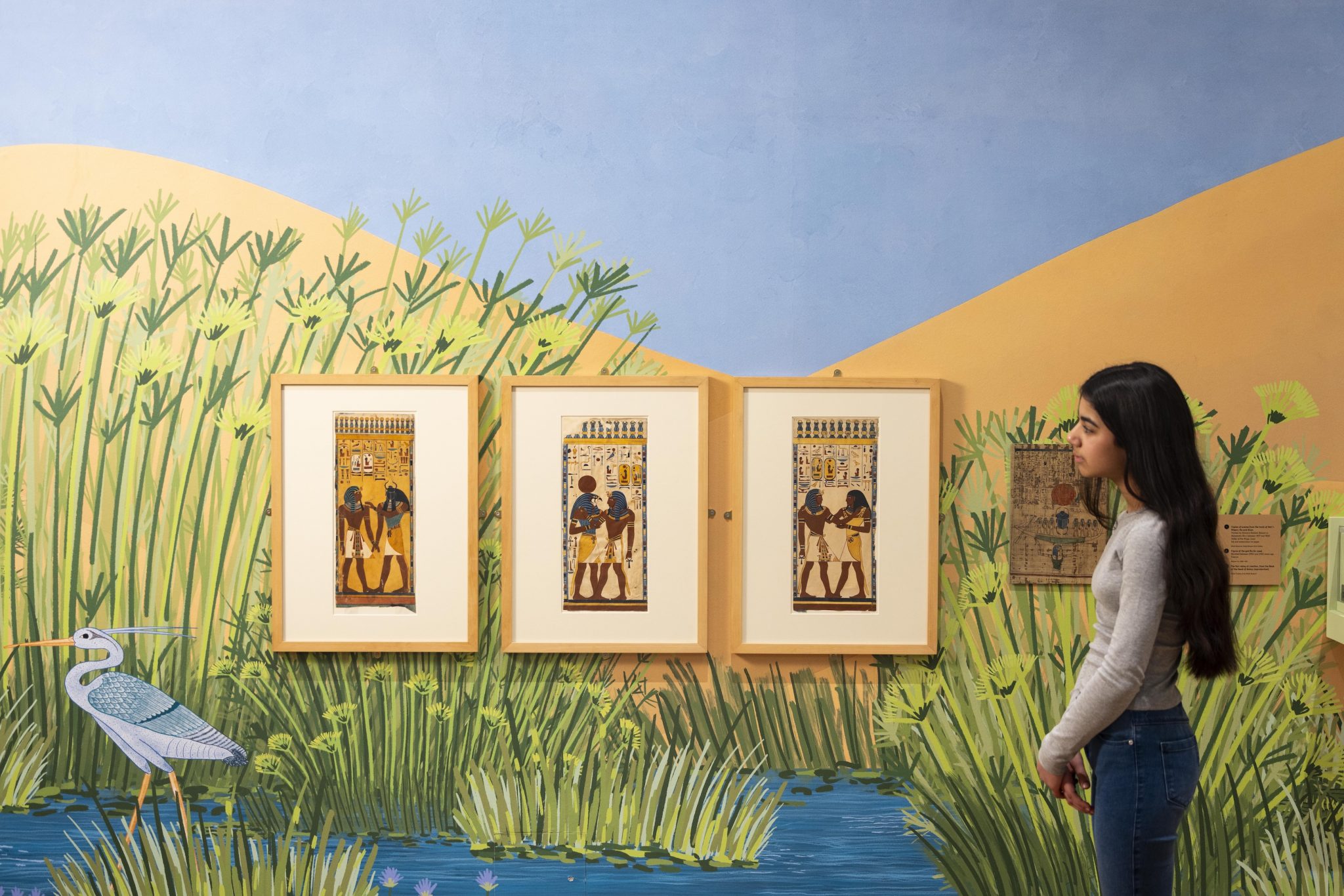There is plenty on offer for grown-ups in the Young V&A’s latest exhibition Making Egypt, but what really is the point of that?
What to do if you’ve got a kid bouncing off the walls at the weekend and it’s raining outside? With the widespread closure of council-run children’s centres across England alone – down from more than 3,000 in 2010 to just 1,168 in 2023 – you might well turn instead to a museum if you’re lucky enough to have one nearby. Especially if you’re middle or upper-middle class – according to a 2023 study carried out by the Art Fund, which found that pupils between the ages of six and fifteen from working class backgrounds were 30 percent less likely to have visited a museum in the past year compared to their more privileged peers, while that disparity deepens along regional lines.
In Berlin, you might take your little ones to BAUBAU at Gropius Bau, a play space for kids opened last September featuring colourful wallpapers, structures and objects to configure flexible spaces ‘where more is allowed than forbidden’. Or there is Uniqlo Tate Play in London, a rotating programme of periodic activities scheduled during school holidays in Tate Modern’s vast Turbine Hall and Tanks, which responds to the art on display. The gadgets, gizmos and scary creatures of science and natural history museums, from Sydney to Singapore and across the UK and US, have historically lent themselves more naturally to adaptation for kids, but art and design spaces seem to struggle with providing meaningful engagement for younger audiences. Of course, the sad truth of the often-temporary outreach programmes in an arts context is their failure to reach beyond the museums’ core demographic of wealthy, white, highly-educated visitors who are swift to swoop upon the creative activities on offer, all free-of-charge. These programmes may well be bringing in certain young people, but to what end?
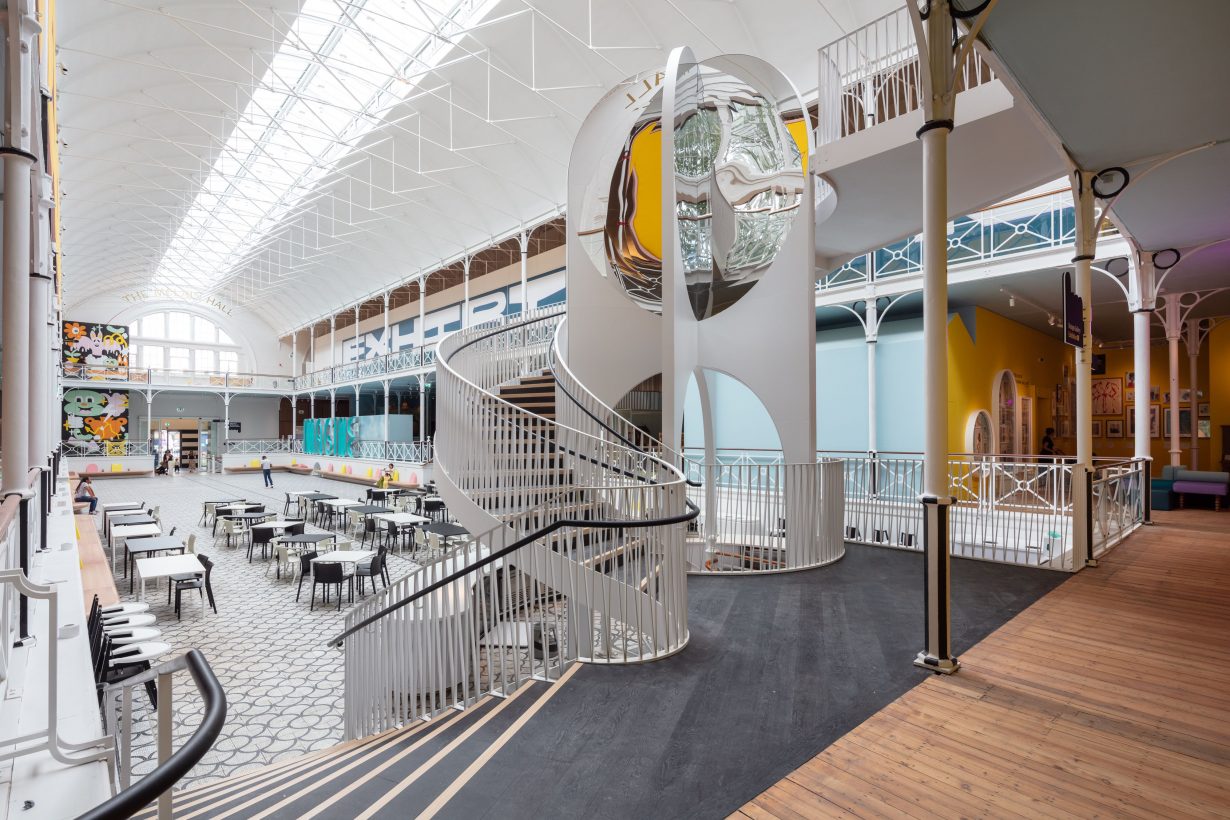
At the Young V&A (formerly the Museum of Childhood) in London’s Bethnal Green, which reopened in 2023 following a three-year, £13m redesign, children’s activities don’t just respond to the museum collection but directly shape and inform it. Giant electric-blue building blocks are stacked at the centre of a display of various modular construction games, while what must surely be the most bougie soft play for under-twos in the capital is flanked by colour-coordinated collections of century-old toys in bright pops of colour. The light-filled central hall ‘feels like one of London’s great indoor public spaces, a British Museum great court ruled by the under-15s’, as one reviewer put it. A sign in the cafe promises free nappies and wipes to anyone in need, while a carton of milk is left on the counter for anyone to help themselves. If museums aim to offer a public service to audiences not only of all ages but of all backgrounds, the Young V&A (located in the borough with the highest rate of child poverty in the UK) appears to go some way towards fulfilling this in the most practical of senses.
Their efforts have not gone unnoticed. The museum won the Art Fund Museum of the Year 2024, while this May the brand new 16,000m2 V&A East in the Queen Elizabeth Olympic Park will expand their East London offering with an ‘immersive visitor experience’ for a swathe of new visitors, featuring a ‘storehouse’ which aims to reinvent the museum’s archives and storage for public display. Yet amid the lavish reimagining of how a museum might interact with its visitors, the temporary exhibitions staged since the reopening of the Young V&A less than two years ago have fallen surprisingly short. The latest, Making Egypt, which rather pettily calls itself ‘the UK’s first child-centred museum exhibition around creativity in ancient Egypt’ in what can hardly be a crowded field (hedging to set itself apart from the ubiquitous presence of the British Museum), brings together a swathe of artefacts from both ancient Egypt and the subsequent millennia.
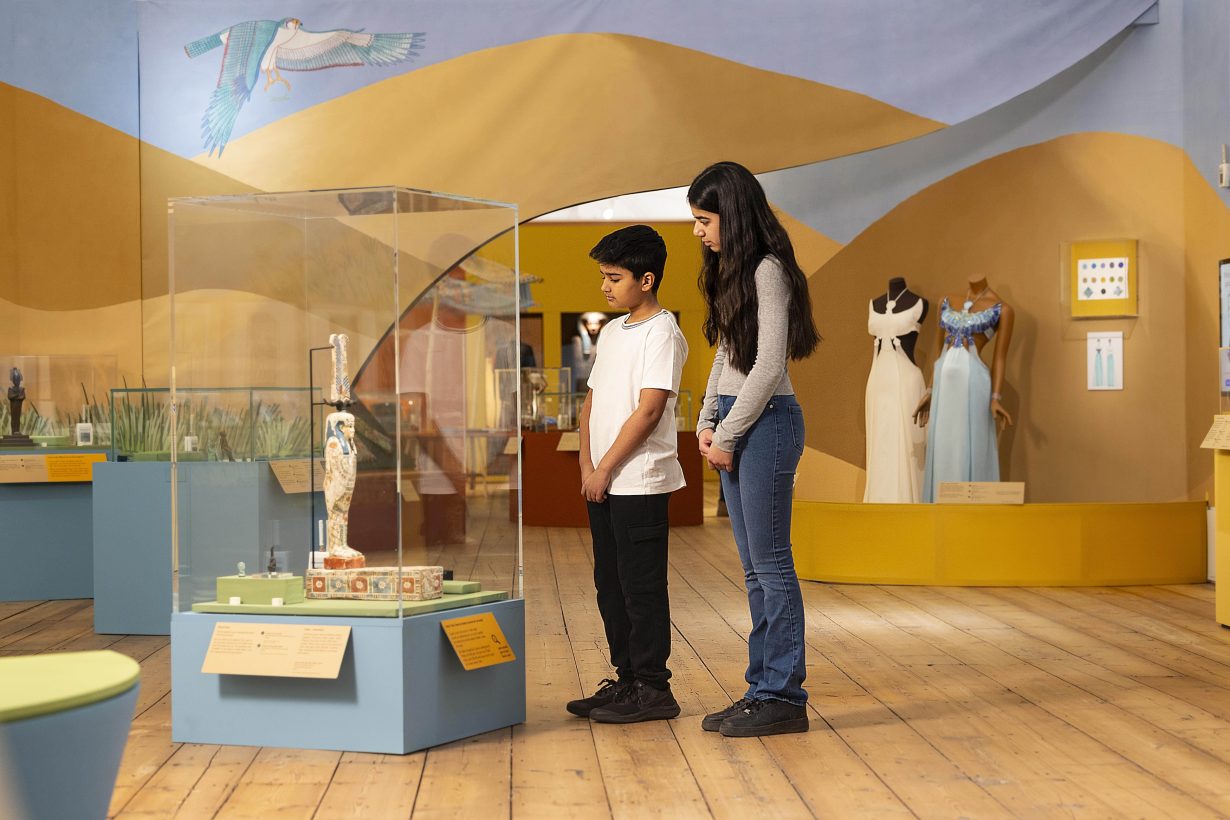
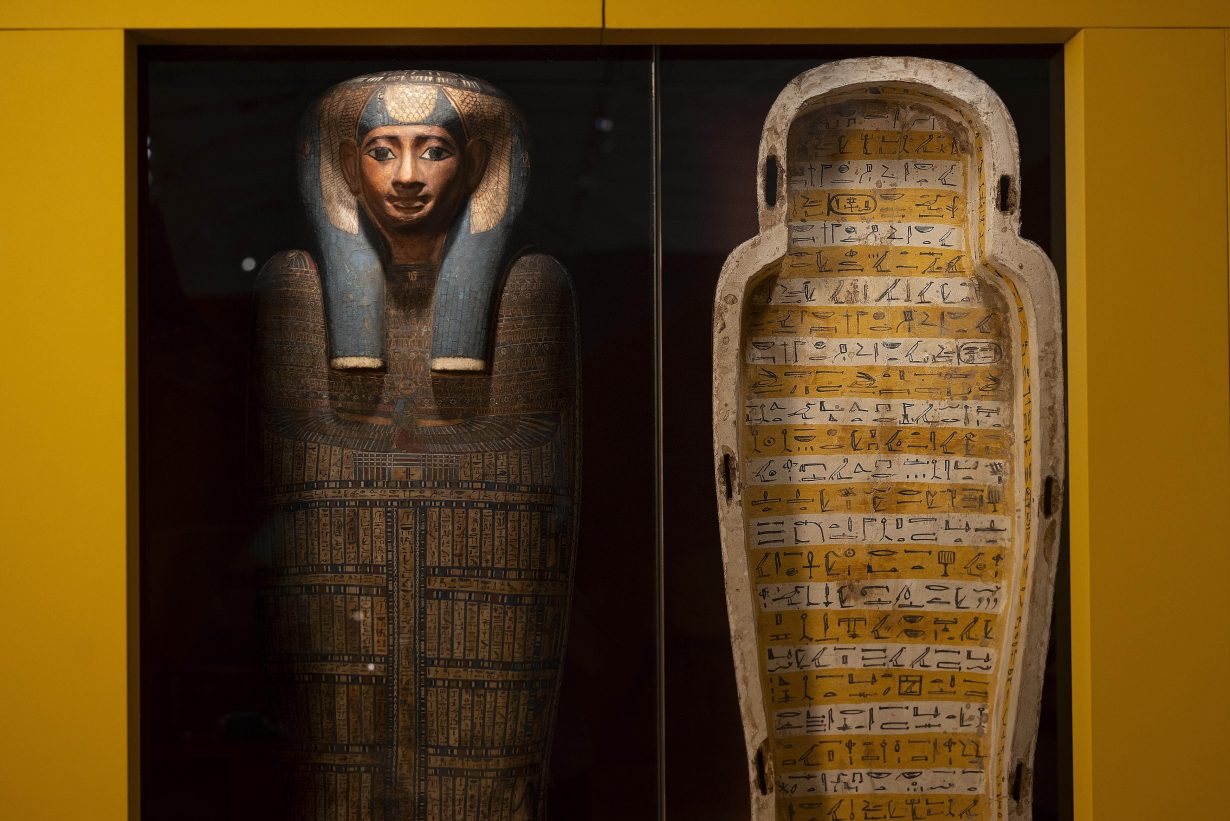
The exhibition focuses on how some of the best-known tales of ancient Egyptian mythology were created, and the many practical ways in which Egyptians communicated and illustrated these beliefs, from hieroglyphs to jewellery to highly decorative funerary rituals. We see their painting materials – powdered charcoal, malachite and lapis lazuli – alongside ancient artist palettes found at Kahun, used around 4,000 years ago. An assortment of objects are displayed prettily in vitrines at various heights, presumably in a bid to appeal to the whole gamut of children expected to wander through the exhibition’s three rooms, from toddlers to teens. But for a children’s museum so actively engaged in rethinking methods of display, the crowded glass cabinets, with their densely formatted dates and labels, feel almost archaic. The viewing experience (for those with enough patience, or the ability to read) primarily involves hunching over these numbered labels as you attempt to ascertain which item in the vitrine is indeed an ancient artefact and which is a Victorian replica. And while the walls might be whimsically painted to evoke river scenes and desert sand dunes, in a move that reads as less child-friendly and more reminiscent of a wider trend for shouty exhibition design by contemporary designers enlisted to make art-historical exhibitions ‘relevant’ to new audiences, the base typology of things-displayed-in-glass-cabinets remains unchanged.
The sun god Ra, a colourful wall text tells us, must carry the sun across the sky in a boat, while at night he battles the evil snake Apophis in the underworld. In copies of scenes from the tomb of Seti I in Luxor (small, framed nineteenth-century paintings on paper) we see Ra with his various faces, from scarab beetle to falcon to human, while ancient amulets under glass nearby echo these same motifs. Yet the decision to focus on these individual, ornate objects as representative of a greater whole misses the bigger picture. The ancient Egyptians certainly built a remarkable web of mythological beliefs, but the many ways in which these have been preserved, uncovered, ransacked, interpreted and reinterpreted over thousands of years matter. Where are photographs (or, even better, an immersive recreation) of any of the 65 tombs in the Valley of the Kings, in which every last surface is covered with vibrant imagery? What are some of the locations where these amulets were found, and by whom? Egyptomania spread across Europe throughout the eighteenth and nineteenth centuries following violent military campaigns by both the French and the British across Egypt, with the discovery of both the Rosetta Stone and Tutankhamun’s tomb by western explorers not just fuelling this fascination but shaping it from an Orientalist perspective. It is precisely the cartoonish outlines of this reductive portrayal that continues to make ancient Egypt so child-friendly in the West, with these past colonial endeavours a grim undertone to the fun if simplistic cultural marketing that has made King Tut, the Great Pyramids and the Sphynx such a kiddies’ hit for the ages.
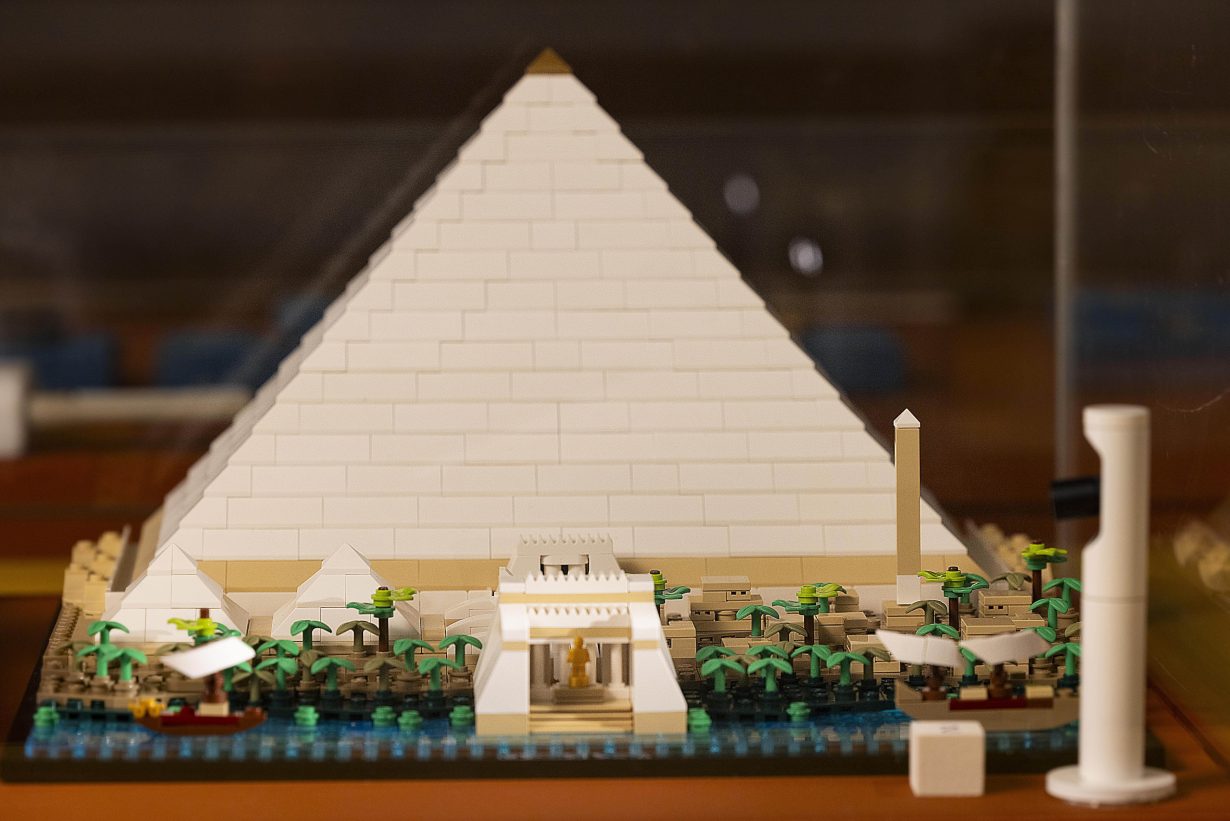
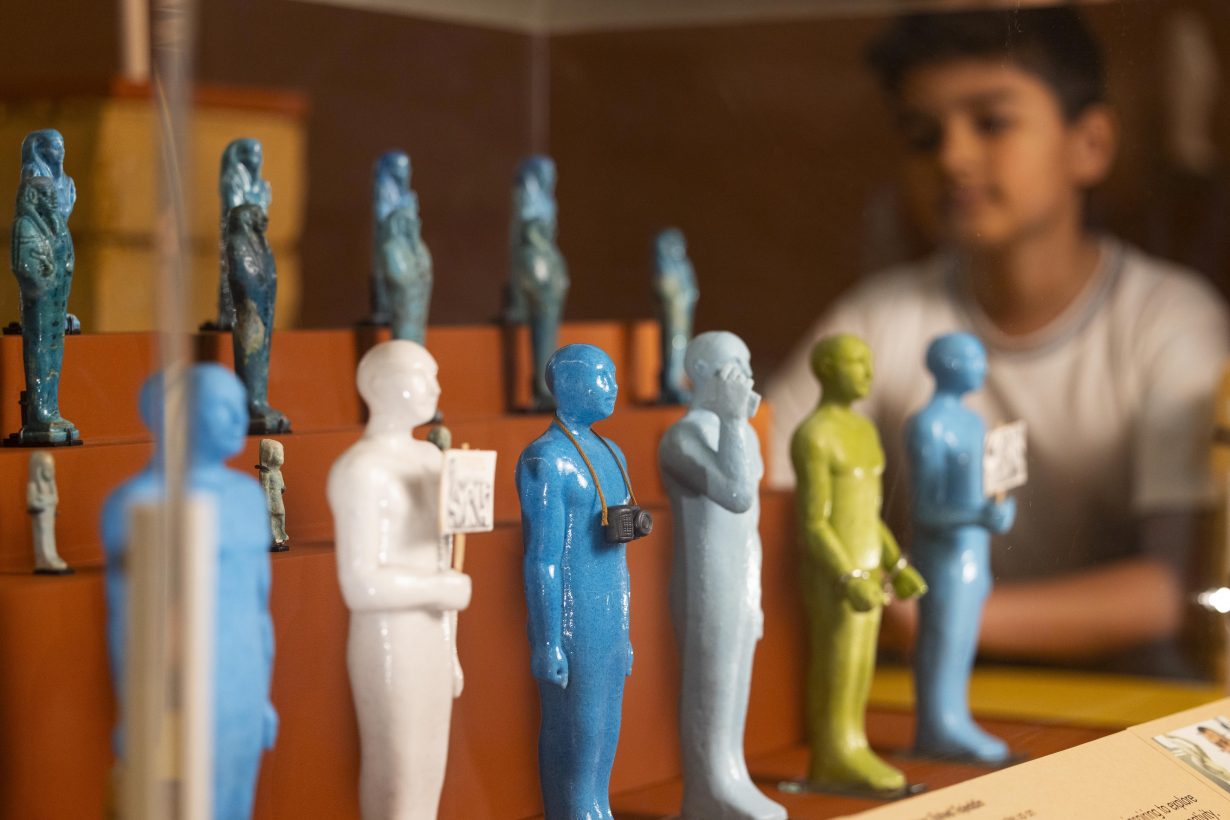
Grasps at contemporary relevance are dotted around the exhibition, from a film poster for The Mummy (1999) to Marvel’s Moon Knight comic (again, sealed under glass). Artist Zahed Tajeddin’s playful sculptural series of modern-day shabtis (Nu Shabtis, 2015) – funerary figurines placed by the ancient Egyptians in tombs to act as servants for the deceased in the afterlife – offer a tongue-in-cheek vision of what these servants might do if they had the day off, from attending a protest to going sightseeing. As an experiment, I asked Chat GPT to suggest films, fashion and comics that have been inspired by ancient Egypt. Its first response was The Mummy, while Moon Knight was not far behind. In another room, a pyramid made of Lego bricks could be viewed, and a nearby screen showed digitally rendered obelisks, pyramids and tombs from Minecraft. These undoubtedly offer an initial route in for children to greet with recognition, even as the show’s contemporary references jump frenetically from the exceedingly obvious to the extremely niche, but could the curators really not come up with anything more adventurous?
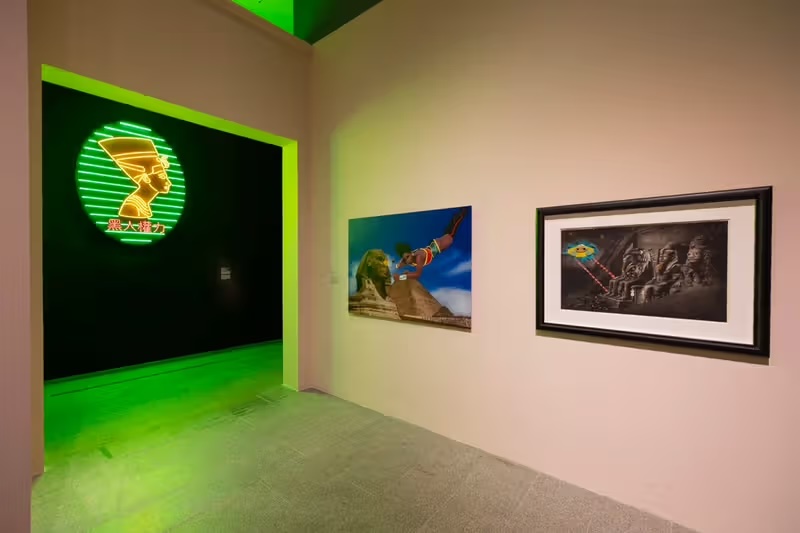
Where is the cheeky influence of ancient Egypt on postmodern architecture, from the Louvre’s pyramids to the Luxor casino of Las Vegas, or indeed on the relationship of its forms and materials to the contemporary vernacular architecture of Egypt today? What about the free jazz of Sun Ra and his Arkestra, or the fantastical staging and costumes of Philip Glass’s Akhnaten opera? Or any of the hugely varied contemporary works featured in the recent audacious Flight into Egypt: Black Artists and Ancient Egypt, 1876–Now at the Metropolitan Museum of Art (which closed last week as Making Egypt opened), by the likes of Henry Taylor, Kara Walker, Lauren Halsey and even Beyoncé? The presumption that children would fail to connect with such diverse examples of culture, and must instead be relegated to the most literal of references, seems to entirely contradict the V&A’s own ethos of rewriting how we ascribe value to objects. This is a museum where a thousand-year-old shoe can comfortably sit alongside one manufactured last year, and so-called culture blends easily into popular culture. A 2024 marketing campaign by the museum used the slogan ‘if you’re into it, it’s in the V&A’ in a bid to emphasise precisely this type of accessibility. But, at its worst, the results are reductive rather than expansive, lending itself to a kind of cultural conservatism that is difficult to shake.
It is a timidity that hangs over the entirety of Making Egypt. Child-centred it may be, but it looks a lot like an exercise in classical museum display, bar a few uninspiring interactive button-pressing stations. A miniature doorway runs between two rooms in the exhibition, perfect for children to crawl through. On a Sunday afternoon, it is the most popular spot in the whole place. Yet the V&A remains unwilling to take heed from this and move beyond their traditional methods of presentation, resulting in vitrines left either ignored or admired only by the adult visitors. There is little sensory invocation of the ancient Egyptians, which relegates the otherwise remarkable artefacts on show to the status of nothing more than a few cases of meaningless trinkets. There is plenty here for the grown-ups, but what really is the point of that? The British Museum, meanwhile, has for decades hosted ‘collection handling sessions’ for visitors both young and old to gain an intimate, tactile experience of the objects. While in an exhibition (and museum) that promises to see the world through children’s eyes, the overriding message appears to still be look but don’t touch.
